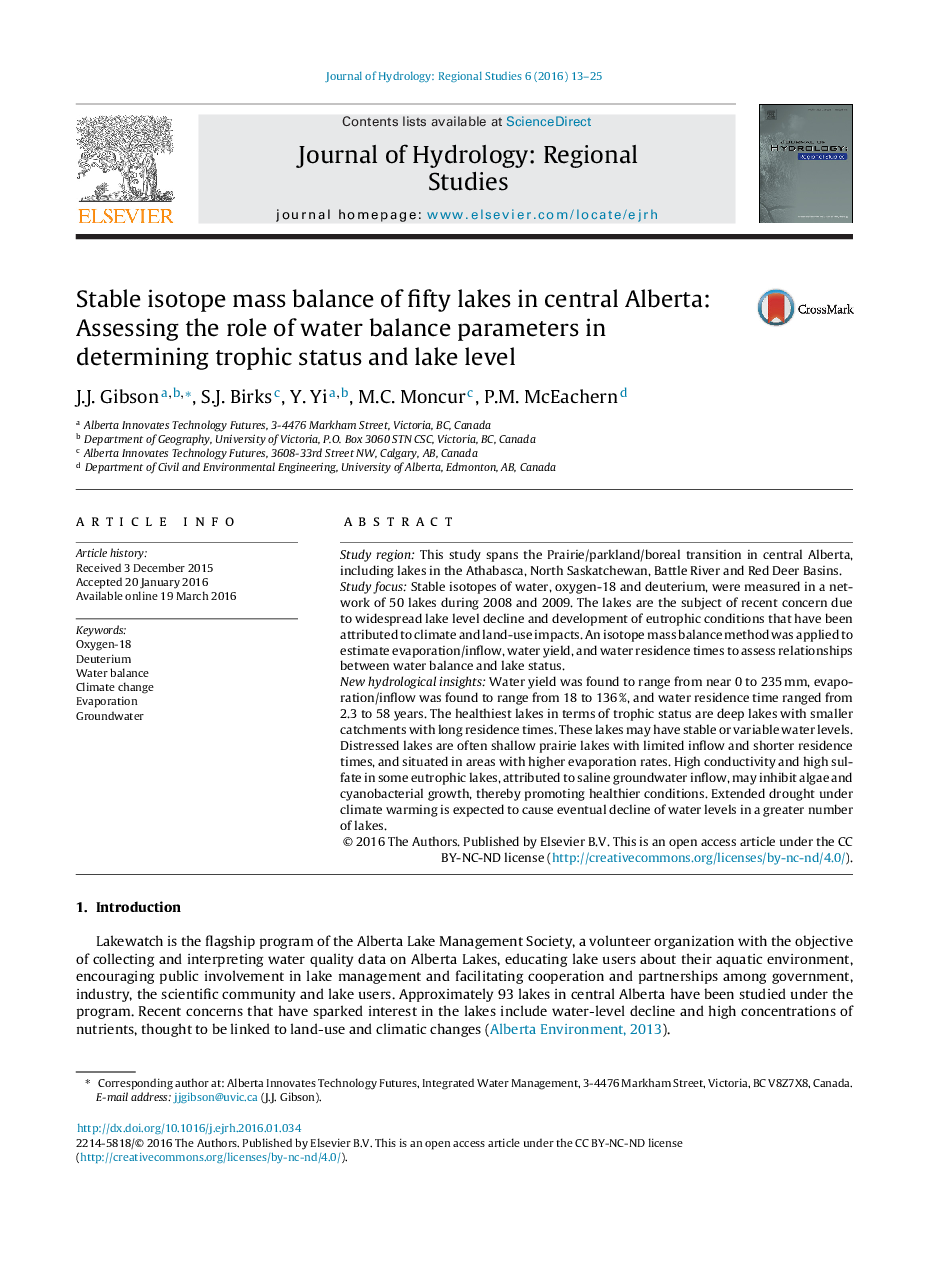| Article ID | Journal | Published Year | Pages | File Type |
|---|---|---|---|---|
| 4435083 | Journal of Hydrology: Regional Studies | 2016 | 13 Pages |
•δ18O and δ2H measured in water samples collected from 50 lakes.•Isotope mass balance used to estimate evaporation/inflow, water yield, residence times.•Four lake classes proposed: prairie, boreal/parkland lakes with high or low water yield.•Healthiest lakes were medium to deep lakes with smaller catchments.•Most distressed lakes were shallow prairie lakes with limited water yield.
Study regionThis study spans the Prairie/parkland/boreal transition in central Alberta, including lakes in the Athabasca, North Saskatchewan, Battle River and Red Deer Basins.Study focusStable isotopes of water, oxygen-18 and deuterium, were measured in a network of 50 lakes during 2008 and 2009. The lakes are the subject of recent concern due to widespread lake level decline and development of eutrophic conditions that have been attributed to climate and land-use impacts. An isotope mass balance method was applied to estimate evaporation/inflow, water yield, and water residence times to assess relationships between water balance and lake status.New hydrological insightsWater yield was found to range from near 0 to 235 mm, evaporation/inflow was found to range from 18 to 136 %, and water residence time ranged from 2.3 to 58 years. The healthiest lakes in terms of trophic status are deep lakes with smaller catchments with long residence times. These lakes may have stable or variable water levels. Distressed lakes are often shallow prairie lakes with limited inflow and shorter residence times, and situated in areas with higher evaporation rates. High conductivity and high sulfate in some eutrophic lakes, attributed to saline groundwater inflow, may inhibit algae and cyanobacterial growth, thereby promoting healthier conditions. Extended drought under climate warming is expected to cause eventual decline of water levels in a greater number of lakes.
